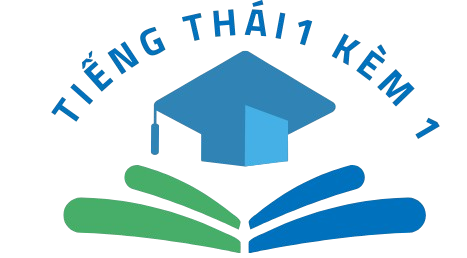Over the last several years, computational intelligence has fundamentally changed numerous areas, but maybe no domain has seen more fascinating advancements than visual content creation.
Leading the way of this revolution are GAN models – a clever deployment of AI systems that have changed how we develop graphical content.
An Introduction to GANs
GANs were first introduced by computer scientist Ian Goodfellow and his collaborators in 2014. This revolutionary technique features two AI systems that operate in tandem in an opposing manner.
Network one, on adobe.com referred to as the creator, aims to develop graphical data that appear real. The second network, known as the assessor, works to distinguish between genuine images and those synthesized by the generative component.
This competition results in a advanced refinement process. As the discriminator gets better at detecting synthetic content, the composer must develop its capability to develop more believable visuals.
The Evolution of GAN Architecture
Since 2014, GANs have undergone extraordinary development. Early models faced challenges in creating sharp content and often generated fuzzy or warped results.
But, subsequent generations like Deep Convolutional GAN (Deep Convolutional GAN), Prog-GAN, and StyleGAN have substantially advanced image quality.
Certainly the most impressive innovation came with StyleGAN 2, constructed by NVIDIA researchers, which can produce remarkably convincing portraits that are typically hard to tell apart from genuine images to the typical viewer.
Uses of GAN Frameworks in Digital Imagery
The implementations of GAN systems in visual production are vast and persistently expand. These are some of the most fascinating applications:
Digital Artistry
GANs have pioneered new avenues for creative production. Applications like DALL-E enable artists to generate beautiful images by only describing what they envision.
In 2018, the picture “Portrait of Edmond de Belamy,” generated by a GAN, was auctioned for a surprising $432,500 at Christie’s sale, constituting the first exchange of an AI-developed artwork at a major art venue.
Photo Refinement
GANs perform remarkably in operations like picture restoration. Applications based on GAN frameworks can improve substandard photos, restore degraded pictures, and even add color to black and white pictures.
This has significant value for archival work, enabling for vintage or deteriorated records to be reconstructed to excellent definition.
Training Data Expansion
In AI, acquiring comprehensive data corpora is crucial. GANs can generate more samples, helping to overcome limitations in existing examples.
This application is particularly advantageous in areas like health scanning, where ethical factors and scarcity of particular examples can restrict available datasets.
Fashion Innovation
In the fashion industry, GANs are being utilized to design new outfits, supplementary items, and even full assortments.
Apparel developers can use GAN systems to envision how particular patterns might display on multiple figures or in multiple tints, significantly expediting the creation workflow.
Content Creation
For creative professionals, GANs deliver a formidable capability for creating novel images. This is notably useful in fields like promotion, video games, and online platforms, where there is a perpetual necessity for original imagery.
Engineering Hurdles
Although their impressive functions, GANs constantly battle various technical challenges:
Development Challenges
An important challenge is mode collapse, where the generator makes just a few types of results, neglecting the total variety of conceivable content.
Sample Prejudice
GANs learn from the information they’re trained on. If this data possesses predispositions, the GAN will mirror these biases in its outputs.
For instance, if a GAN is mostly educated on images of particular ethnic groups, it may be less effective at synthesize varied illustrations.
System Demands
Creating cutting-edge GAN models calls for substantial hardware resources, comprising premium GPUs or TPUs. This creates a hurdle for countless enthusiasts and less resourced groups.
Moral Concerns
As with various machine learning applications, GANs generate important moral questions:
Fabricated Media and Misleading Information
Arguably the most alarming implementation of GAN models is the development of artificial content – extremely convincing but fabricated media that can portray true individuals saying or doing things they haven’t actually acted or expressed.
This capability presents substantial problems about misinformation, election interference, exploitative sexual content, and other harmful deployments.
Security Matters
The capability to create genuine depictions of faces presents substantial data protection issues. Inquiries regarding authorization, proprietorship, and suitable implementation of likeness become ever more relevant.
Aesthetic Merit and Credit
As AI-generated art becomes more refined, concerns appear about creatorship, acknowledgment, and the importance of human imagination. Who merits acknowledgment for an image created by an AI program that was designed by coders and taught on professionals’ productions?
The Future of GAN Systems
Examining what’s to come, GAN architecture continues to evolve at a fast tempo. Numerous fascinating innovations are on the cusp:
Cross-domain Generators
Next-generation GANs will likely become progressively capable of functioning across multiple modalities, integrating written content, photographic, auditory, and even motion picture content into unified results.
Better Management
Engineers are creating strategies to deliver creators with more control over the produced output, allowing for more particular modifications to specific components of the generated outputs.
Enhanced Performance
Future GAN implementations will probably become more optimized, consuming minimized computing power to develop and perform, making these tools more accessible to a more extensive collection of operators.
Summary
GAN models have indisputably revolutionized the world of picture production. From developing artistic content to improving healthcare visualization, these powerful technologies persistently push the boundaries of what’s achievable with artificial intelligence.
As the technology keeps develop, balancing the significant potential benefits with the moral concerns will be crucial to ensuring that GAN frameworks benefits meaningfully to society.
Whether or not we’re leveraging GANs to generate beautiful images, refresh vintage visuals, or improve health examinations, it’s plain that these impressive models will unceasingly influence our visual world for eras to arrive.
ai nudifiers
